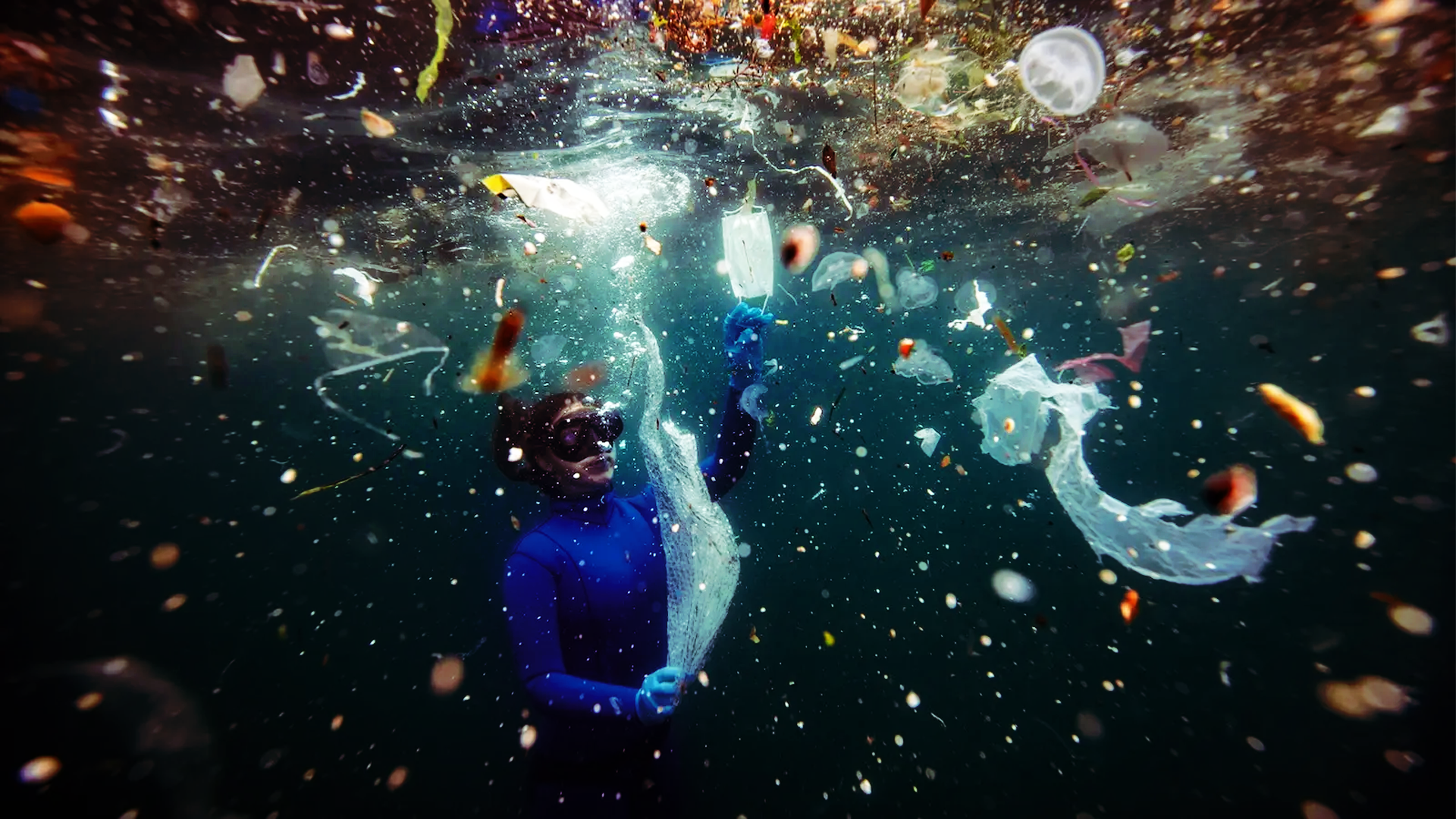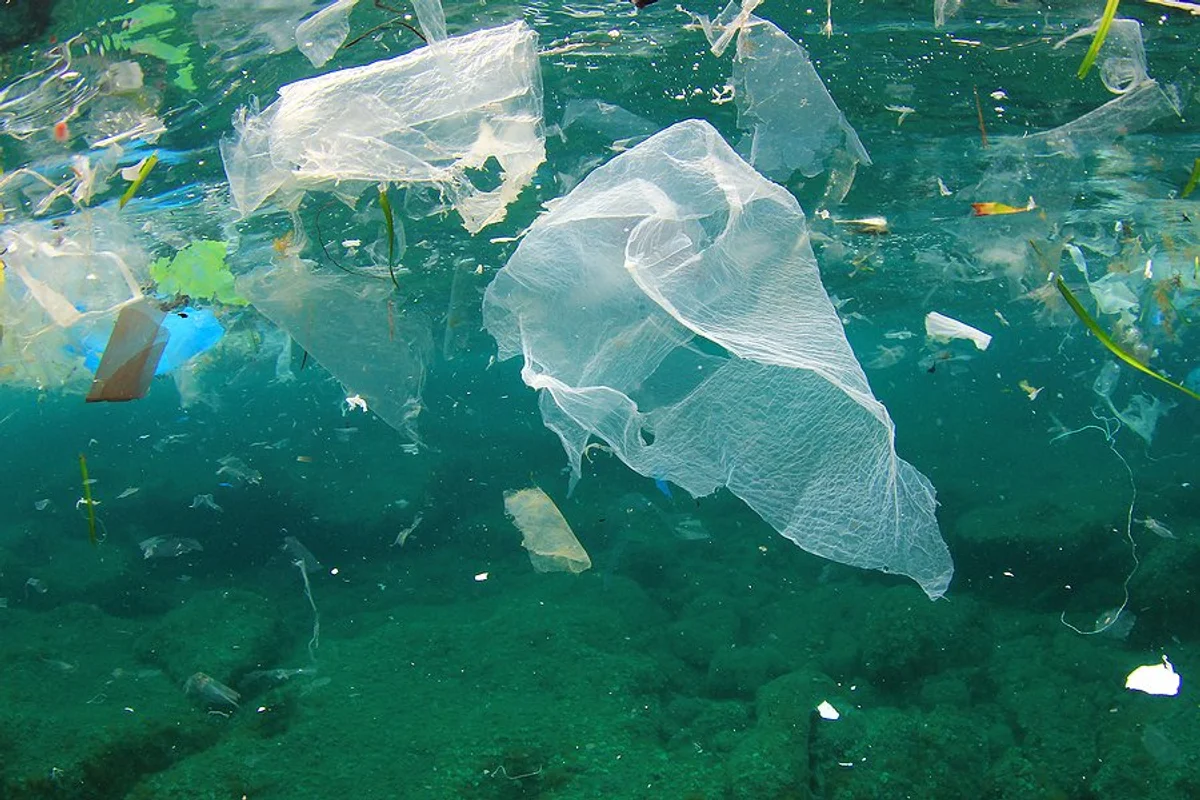The Invisible Plastic Crisis

In the North Atlantic alone, scientists estimate 27 million metric tons of these particles are present—more than all previous estimates of plastic pollution in all oceans, of all sizes.
What's Happening?
A group of scientists from Japan and the Netherlands discovered something alarming in the North Atlantic Ocean: tiny plastic particles called nanoplastics. These are pieces of plastic smaller than a grain of dust—so small you can’t see them, even under a normal microscope. Using a new type of technology, the team found nanoplastics in every one of the 12 ocean locations they studied. They estimate there are around 27 million metric tons of these tiny plastics in just this part of the ocean.
Most nanoplastics start out as bigger pieces of plastic—like water bottles, food wrappers, and clothing made from synthetic materials. Over time, sunlight, ocean waves, and bacteria break those big pieces into smaller and smaller ones. Eventually, they become so tiny that they can float freely through the water, pushed around by currents. Because of their size, they don’t sink like a rock or float like a balloon. Instead, they move in unpredictable ways, making them extremely hard to track or clean up.
The scientists found the highest levels of nanoplastics just beneath the ocean’s surface, especially near the coasts of Europe and in a region called the North Atlantic gyre—a spot already known for collecting plastic trash. But what surprised researchers most was that even at the bottom of the ocean, near the seafloor thousands of meters down, nanoplastics were still present. This means plastic pollution is no longer just a surface issue. It’s become deeply rooted throughout the entire ocean.
The most frequently found type of plastic was PET, the stuff used to make water bottles and food containers. They also found PVC, used in pipes and toys, and polystyrene, which is what foam packaging is made of. These types of plastic showed up at every depth—from near the top of the ocean all the way down to the bottom—proving that no part of the ocean is free from plastic pollution.
Because nanoplastics are so small, they can enter the bodies of animals—and people—much more easily than larger plastic pieces. Studies show these tiny particles can damage organs, mess with reproduction, cause long-term inflammation, and even contribute to diseases like cancer in animals. And since fish and shellfish often eat these plastics, they end up in our food supply. We might be eating or drinking nanoplastics without even knowing it.
The researchers say their estimate of 27 million tons might be too low. Their current tools weren’t able to detect two of the most common types of plastic—polyethylene and polypropylene. These are found in grocery bags, straws, bottle caps, and lots of packaging. So, the real number of nanoplastics in the ocean is likely much higher than what this study shows.
Unlike plastic bottles or bags that can be scooped up in cleanup efforts, nanoplastics are far too small to remove from the water. Experts say the only real solution is to stop plastic pollution before it starts. That means making and using less plastic overall. The United Nations is currently working on a global plastics treaty that could limit how much plastic is produced, encourage reusable alternatives, and force companies to deal with plastic waste more responsibly.
This study is a wake-up call. It shows that plastic pollution isn’t just about what we see on the beach or floating in the ocean. The most dangerous plastic is the kind we can’t see—the kind that’s already inside ocean animals, inside ecosystems, and potentially inside our own bodies. This isn’t just an environmental issue—it’s a public health issue, an economic issue, and a justice issue. The invisible plastic crisis is already here. Now it’s up to us to decide what we’re going to do about it.
Why It Matters
Plastic pollution isn’t just a beach problem—it’s a planetary problem. This study shows we’ve drastically underestimated the scale and danger of plastic in the ocean. Nanoplastics don’t just float around, they enter the bodies of fish, birds, and humans. They travel where we can’t see, cause damage we don’t fully understand, and are multiplying with every bottle tossed away. If we don’t cap plastic production and invest in real alternatives, we’re not just polluting our planet, we’re poisoning ourselves.
?
What are nanoplastics and how are they different from microplastics?
How do nanoplastics affect marine ecosystems and food chains?
Why is plastic production expected to triple by 2050, and what can be done to stop it?
What is the UN plastics treaty, and how could it change the future of plastic pollution?
How can individuals reduce their plastic footprint and push for systemic change?
Dig deeper
An investigative look at the industries and systems responsible for the explosion of plastic waste in our oceans.
National Geographic explores solutions to the ocean plastic crisis—from local action to global policy.
Related

What Is Community?
Community is more than just a group of people—it’s the connections, values, and shared stories that shape how we live, support each other, and find belonging.

Universal Suffrage in the United States
The right to vote wasn’t handed to everyone—it was fought for, over centuries, by people demanding that democracy actually mean everyone has a voice.

The Right to Protest & Civil Disobedience: How Activism Shapes Democracy
From labor strikes to mass demonstrations, activism has been the engine of social change. But what makes a movement successful? This deep dive explores the different roles in activism, the power of civil disobedience, and why protests are essential to democracy.
Further Reading
Stay curious!
